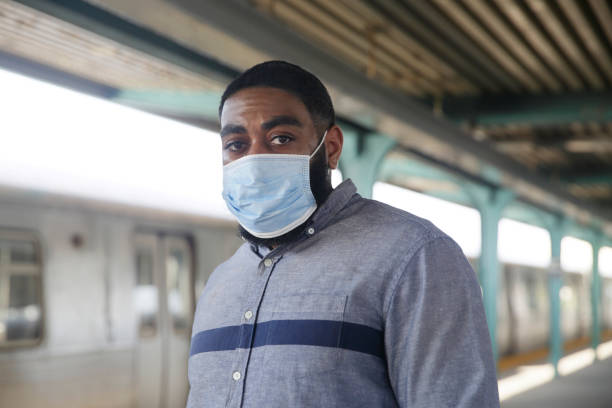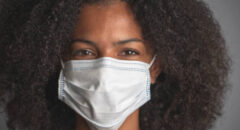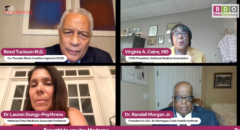
As the COVID-19 pandemic continues, face masks have become an integrated part of everyday life. Although mask mandates vary across states, school districts and employers, wearing a mask is required at airports, federal properties, public transit and for the duration of flights.
Failure to comply with mask mandates within the aviation industry can result in physical removal, fines, termination, and registration on an airline’s no-fly list. Exemptions are provided for children under the age of 2 and individuals with disabilities who have medical proof and have been granted an airline’s pre-approval clearance before their flight departure.
RELATED: A Guide to Wearing Face Masks During COVID-19
Why are we still wearing masks?
To date, the CDC reports that over 710,000 people have died from COVID-19 in the U.S. Though vaccination rates have steadily increased, new cases continue to emerge in critical states grappling to navigate political ideology and science-based measures for effective disease containment.
Facial masks are research-proven to help slow the spread of diseases. A 2020 systematic review published in The Lancet assessed the scientific evidence on the effectiveness of masks and other COVID-19 measures.
The study results indicated that masks, particularly N95 or similar respirators, were associated with reducing the risk of transmission. Similarly, a CDC study indicated that cloth masks are associated with a statistically significant decrease in coronavirus disease spread.
President Biden’s COVID-19 Action Plan outlines the wearing of masks, together with increased testing and vaccinations, as part of its current strategy to slow the spread of COVID-19.
RELATED: Inhaler Mistakes you Didn’t Know you Were Making
Does wearing facemasks cause an asthma attack?
Medical experts and national patient advocacy lung organizations, including the American Lung Association and Asthma and Allergy Foundation of America, have supported masks as safe for people with controlled asthma and lung diseases.
According to the American Academy of Allergy Asthma & Immunology, wearing a face mask does not
impact oxygen saturation for people with and without asthma. There is no clinical or peer-reviewed study to support the claim that face masks increase your body’s carbon dioxide (CO2) levels.
People with COPD or severe uncontrolled asthma are still recommended to wear masks. People with asthma are able to breathe through cloth and standard medical masks without an asthma flare-up. Cloth and medical masks can even aid in blocking common asthma and allergy triggers such as cold air, pollen and dander.
RELATED: Your Face Mask Is Shielding You From Allergens
“I have not seen any patients admitted to the ER with asthma exacerbation precipitated by a mask. It’s the opposite. Masks, social distancing and vaccines are beneficial for keeping people out of the ER, especially those with asthma and other illnesses who are at high risk of severe COVID-19 infection,” Dr. Nathan Uyamadu, an emergency medicine physician says.
If, in the rare case, prolonged face masks wear causes an asthma flare-up, speak with a healthcare provider to develop a treatment plan that might include identifying triggers, controller medication, quick-relief rescue medications, and, if necessary, mask medical exemption.
Note that people with asthma who contract COVID-19 have an increased risk of death and COVID-19 complications.
So, if your uncontrolled asthma results in a mask exemption, you should still practice COVID-19 safety measures such as social distancing and avoiding unnecessary public transportation trips.
Day 1: Just Been Diagnosed with Asthma
Signs of uncontrolled asthma
- Frequent wheezing and coughing
- Nighttime flare-ups that impair sleeping
- Reliance on a rescue inhaler more than three times a week
- Recent asthma attack or hospitalization
- Daily chest tightness and shortness of breath
RELATED: Is My Cloth Mask Good Enough to Face the Delta Variant?
How to make it easier to breathe while wearing a mask
- Avoid wearing masks made of fabric that are not breathable such as vinyl and polyester. Consider face masks made with moisture-wicking and breathable 100% cotton fabric.
- If you are unable to wear a mask for prolonged periods, avoid long-distance traveling on public transportation to limit the risk of infections for yourself and others.
- Experiment with different sizes, types of medical masks and facial coverings to find the right fit.
- Practice wearing facial masks at home in short 20-minute intervals to get used to the feeling.









